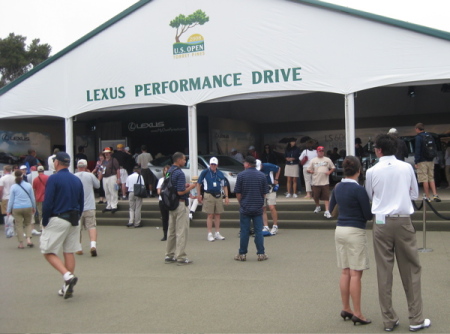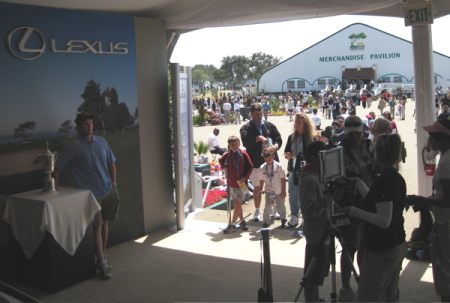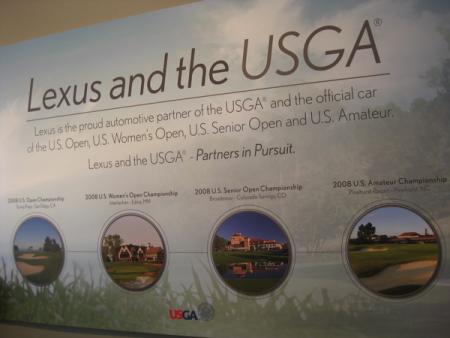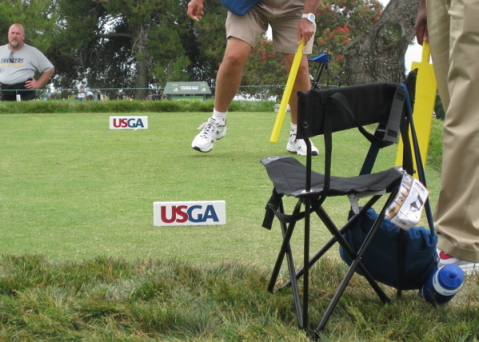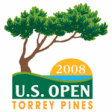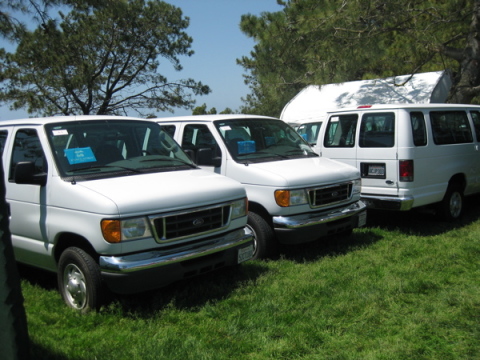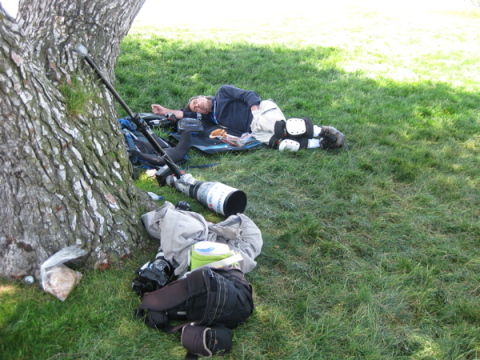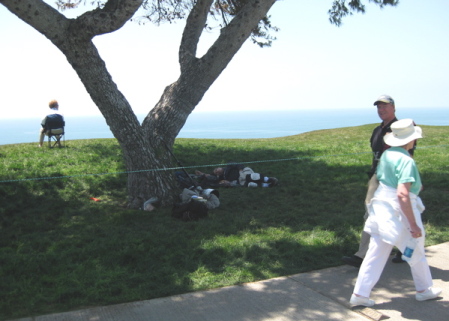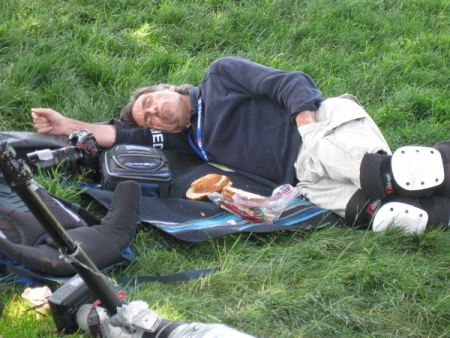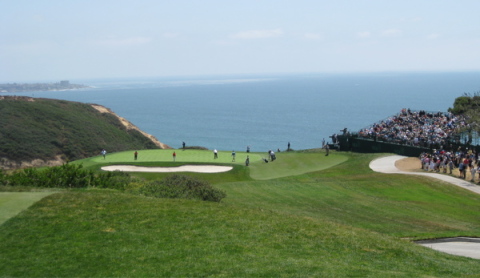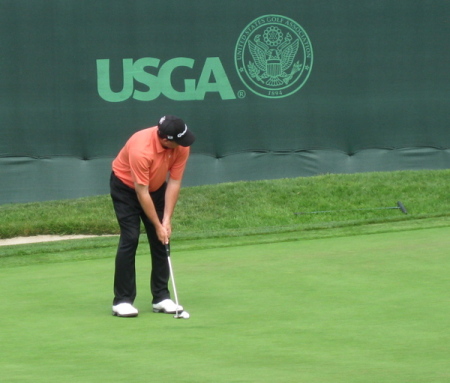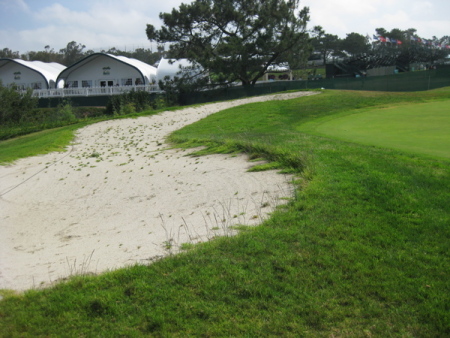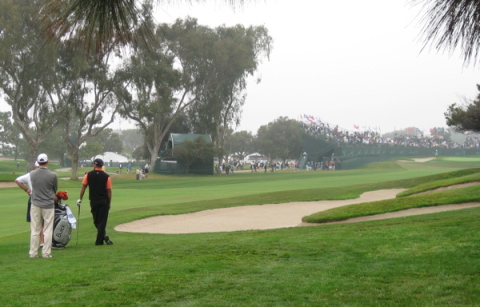Nice to hear from our friend Frank Hannigan, the former USGA Executive Director, who shares some thoughts on this week's Woods-Mickelson pairing.
Dear Geoff:
Pairing Tiger Woods and Phil Mickelson together in the first two rounds of the US Open is like putting Judy Garland and Barbara Streisand on stage together, each doing her own thing at the same time. The result would be discordant but the advance hype would be spectacuar.
The new USGA method of pairing takes the top 12 players from the "world" system and converts them into four groups of three.
I'm surprised the USGA did not embrace an alternate system, that of the FedEx Cup to determine eligibility for the PGA Tour carnival of money during the fall. Proclaiming FedEx points would surely have resulted in another million a year for the USGA which apparently exists to pile up money. There was an analogy in a recet New York Times op-ed column in which a Harvard graduate pointed out that Harvard is the second richest institution in the country, second to the Bill Gates Foundation, hoards the money and is run poorly so that expenses are out of control.
The USGA switch to the new method would be more credible had it been announced in January rather than waiting until it was slam dunk that Mickelson would be in the top 3. And how are we take a statement of self-praise in which the new system is being done in the face of what television wants. Excuse me, but there is nothing television wants more than to have Woods and Mickelson paired.
Perhaps I am over-sensitive on pairings since I drafted them for US Opens beginning in 1968 and ending in 1988 when I left the USGA triumphantly. Our method began with the tenet that the current U.S. and British Open should be together, with the US Amateur champion as the third man.
After that it was just about arbitrary. We followed a hallowed principle that the best players should be scattered throughout the day. Who are the two best in the world? Common answer: Nicklaus and Watson. So Nicklaus would start at 9:10 on Thursday and 1:10 on Friday. Watson's times were the opposite, 1:10 and then 9:10
The stars were spread throughout the day for two reasons, which I concede no longer apply, but illustrate how much golf has changed:
1. Ropes to restrain the patrons from tee to green were not installed until 1954 at Baltusrol at the suggestion of architect Robert Trent Jones. Putting a Woods and a Mickelson together would have been to incite a riot as the patrons fought like beasts in the fairways to establish position.
2. There was a motive to enhance the spectator experience. An in-shape patron could go out in the morning to follow Byron Nelson, have a bite to eat, and emerge to follow Sam Snead in the afternoon. Today such an attempt would be meaningless since the USGA sells too many tickets so that nobody actually gets to see much at all.
While making my pairings I would sometimes yield to an inclination to be cute. Too cute. I once precipitated a disaster by pairing three former California amateur champions together. Just for the hell of it. Alas, two of the three were among the world's truly slow players. When the gap ahead of them became intolerable, my USGA colleague PJ Boatwright, the absolute best at knowing and administering the Rules of Golf, couldn't stand it and slapped a two stroke penalty on Forest Fezler.
When the round ended one of Fezler's fellow competitors launched an appeal to the entire rules committee. The appellant was John Brodie, the best two-sport athlete of our time. John said the fault was his, not Fezler's. The committee, consisting mostly of lawyers, said there was not enough hard evidence to convict Fezler.
The penalty was rescinded, thus assuring there would be painfully slow play in U.S. Opens forever. The only way to deal with slow penalty is to install fear and penalized harshly even if some of the penalties are applied on shaky grounds. Back then we were striving for rounds under 5 hours. There could be a 6 hour round at Torrey Pines.
Some players were acute and sensitive to pairings. Many did not want to play with Arnold Palmer because there was simply too much noise and crowd movement. Bud Jim Colbert implored me to pair him with Arnold on the grounds that it pumped him up. I was glad to comply. Tom Weiskopf, with whom I was on very good terms, once chewed me out on the basis that I had not paired him with two other major champions. He was right.
Pairings really don't matter that much. Jack Nicklaus couldn't have cared less. Not long after he played in an historic 4th round at Merion with amateur Jim Simons I was doing a magazine article and asked him what he remembered about playing with Simons. Answer: "Did I play with Jim Simons that day?"
Only once did I do a pairing that made me proud. I had seen Isao Aoki of Japan play at a British Open. He was amazing, both his unique swing and a putting stroke with the toe pointed at the sky. Aoki was then unfamiliar in the U.S. I thought he deserved a big American audience. So I put him with Nicklaus at Baltursol in 1980.
Nicklaus threw a little 63 at the field in round 1. In fact, they both played so well that they were 1 and 2 after both the 2nd and 3rd rounds and thus played all 4 rounds together. Nicklaus won by setting a U.S. Open scoring record, but so did Aoki by finishing 2nd.
How long will the new USGA system of top 12 last? Until there is another Tiger Woods.
Woods was beyond compelling in his final season as an "amateur." Woods had no status in the point system since had played in only a few pro events. If his equivalent ever comes around again I suspect the USGA will find a way to fit him in the top 12 - despite what television wants.


